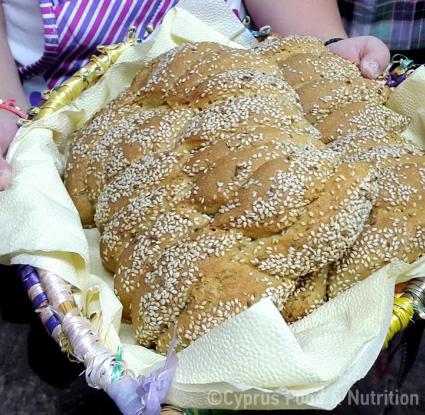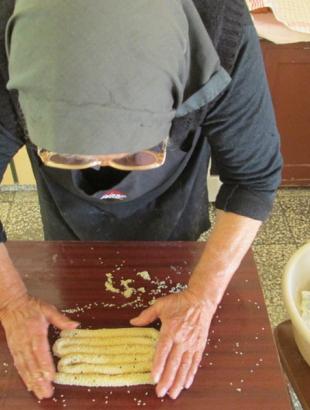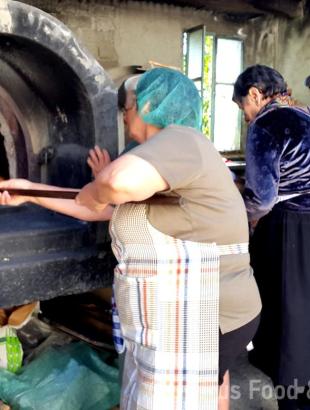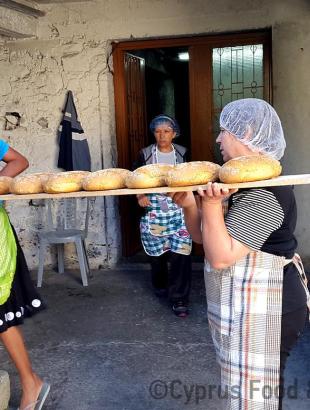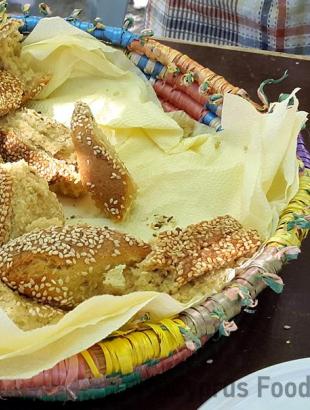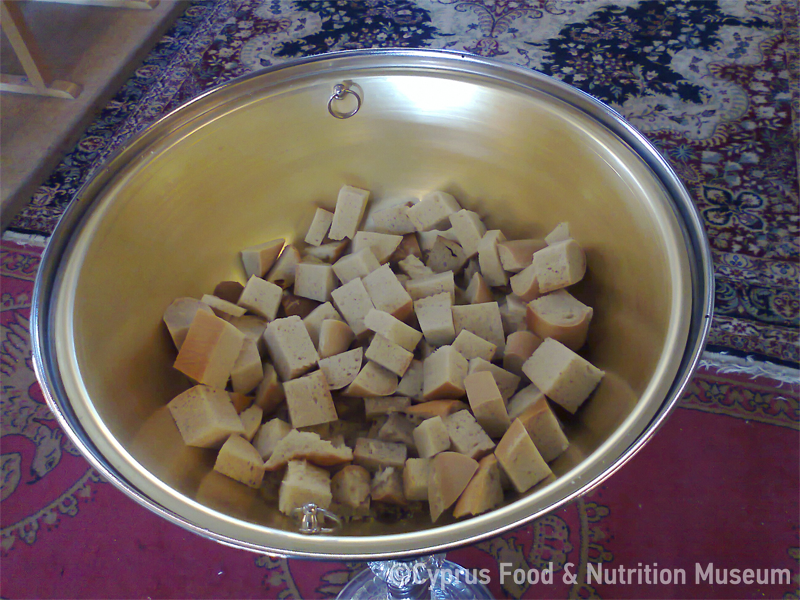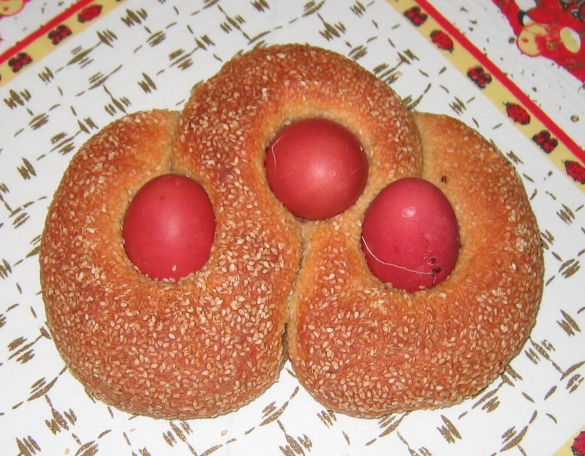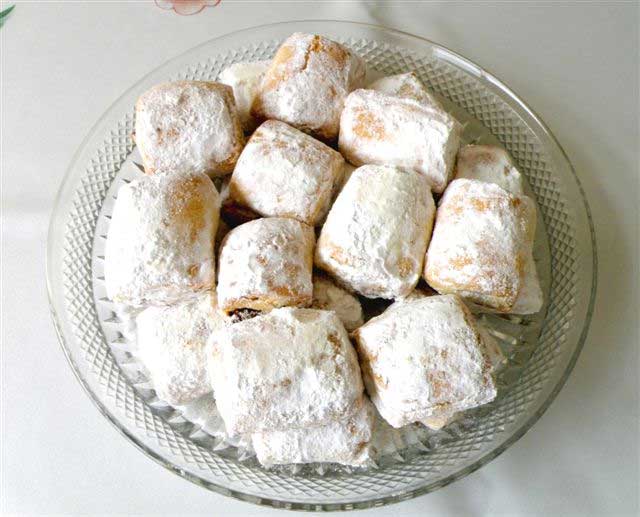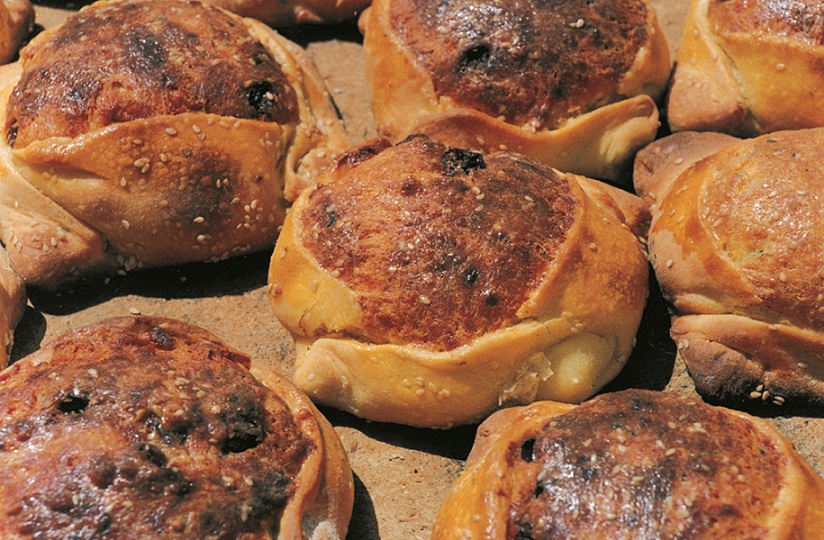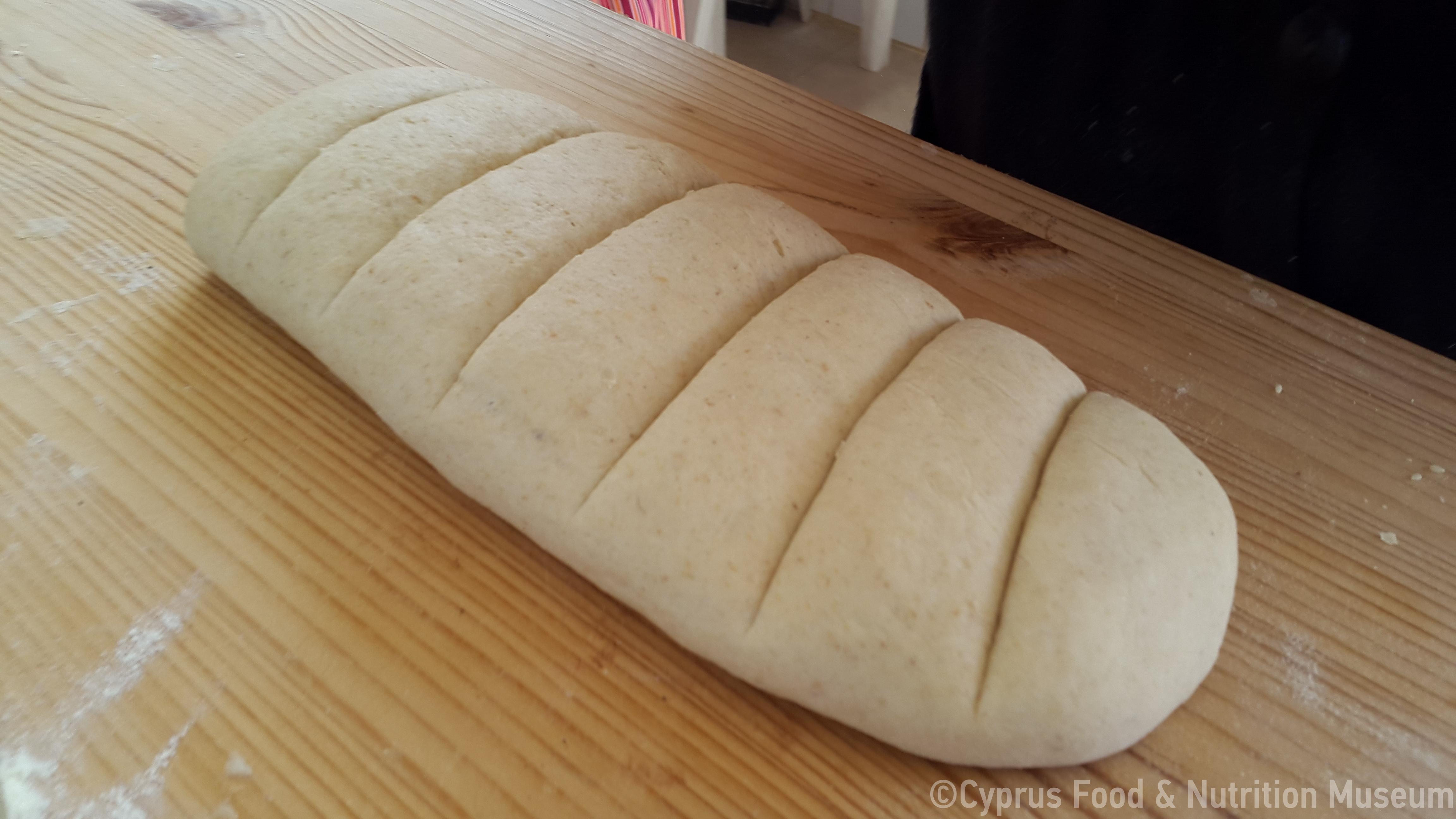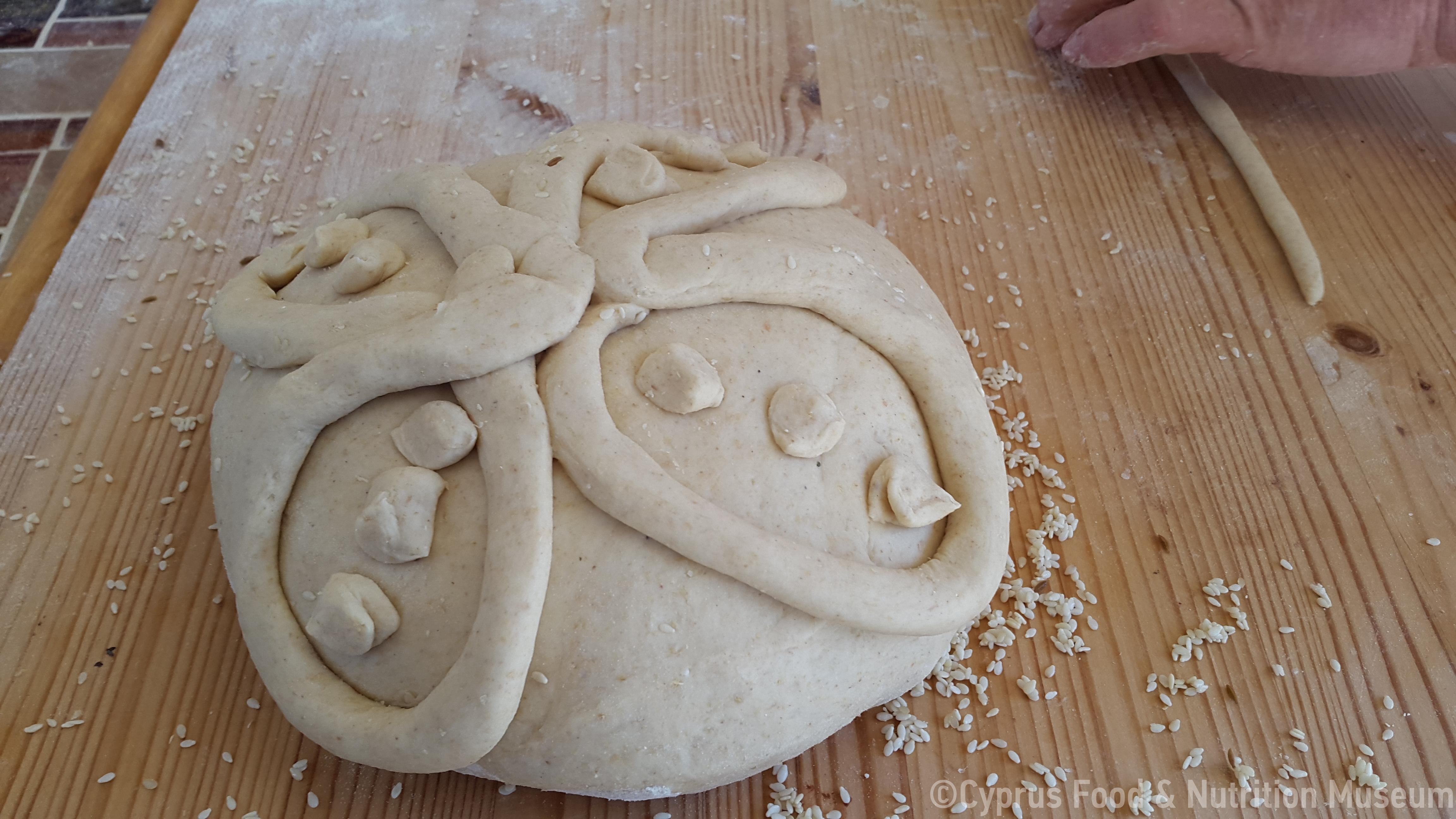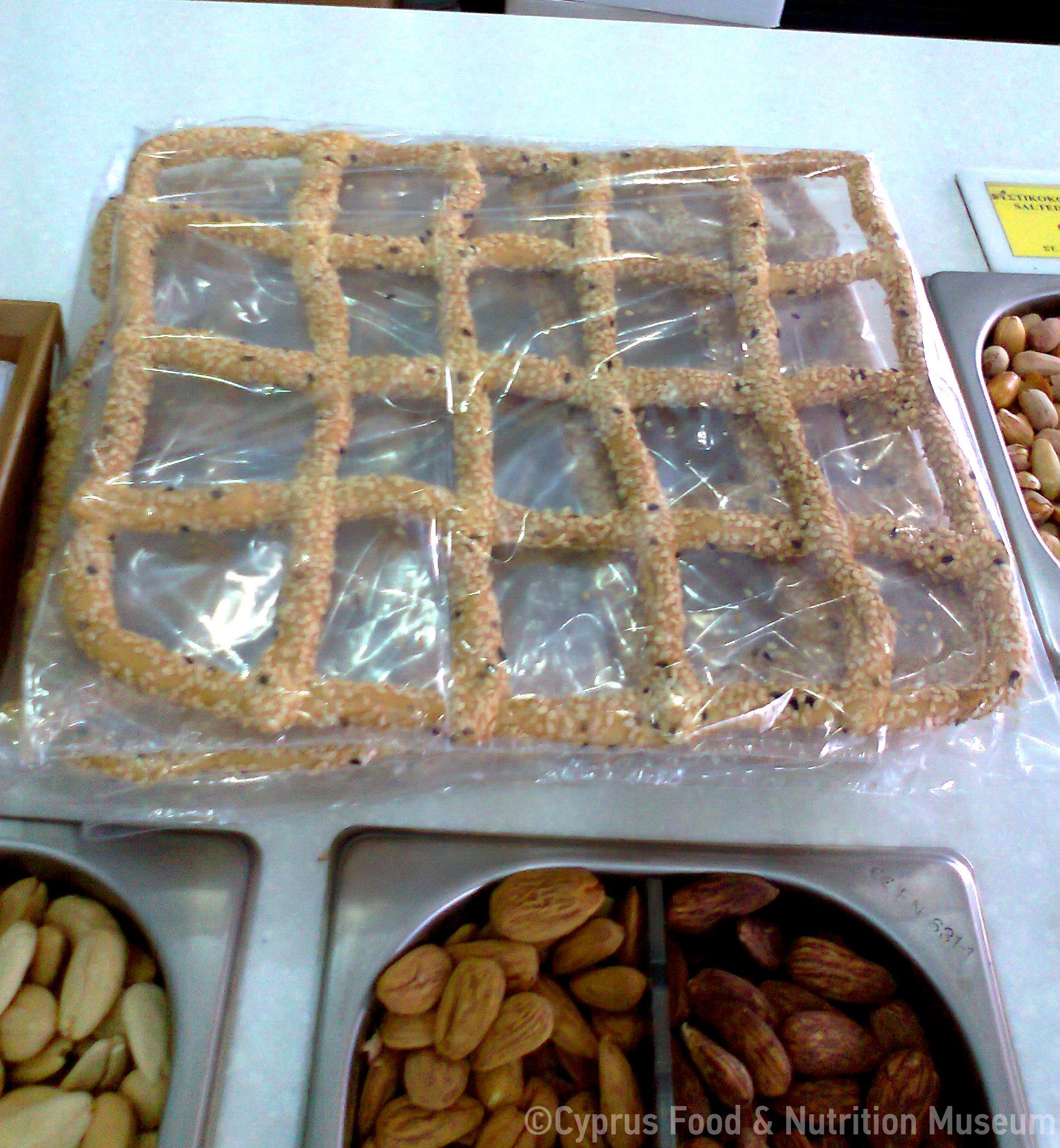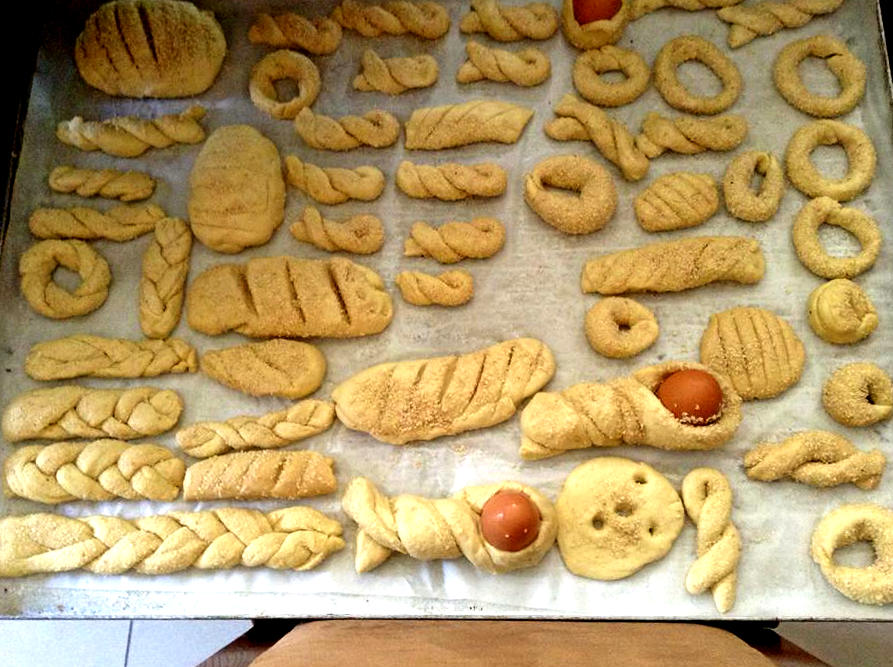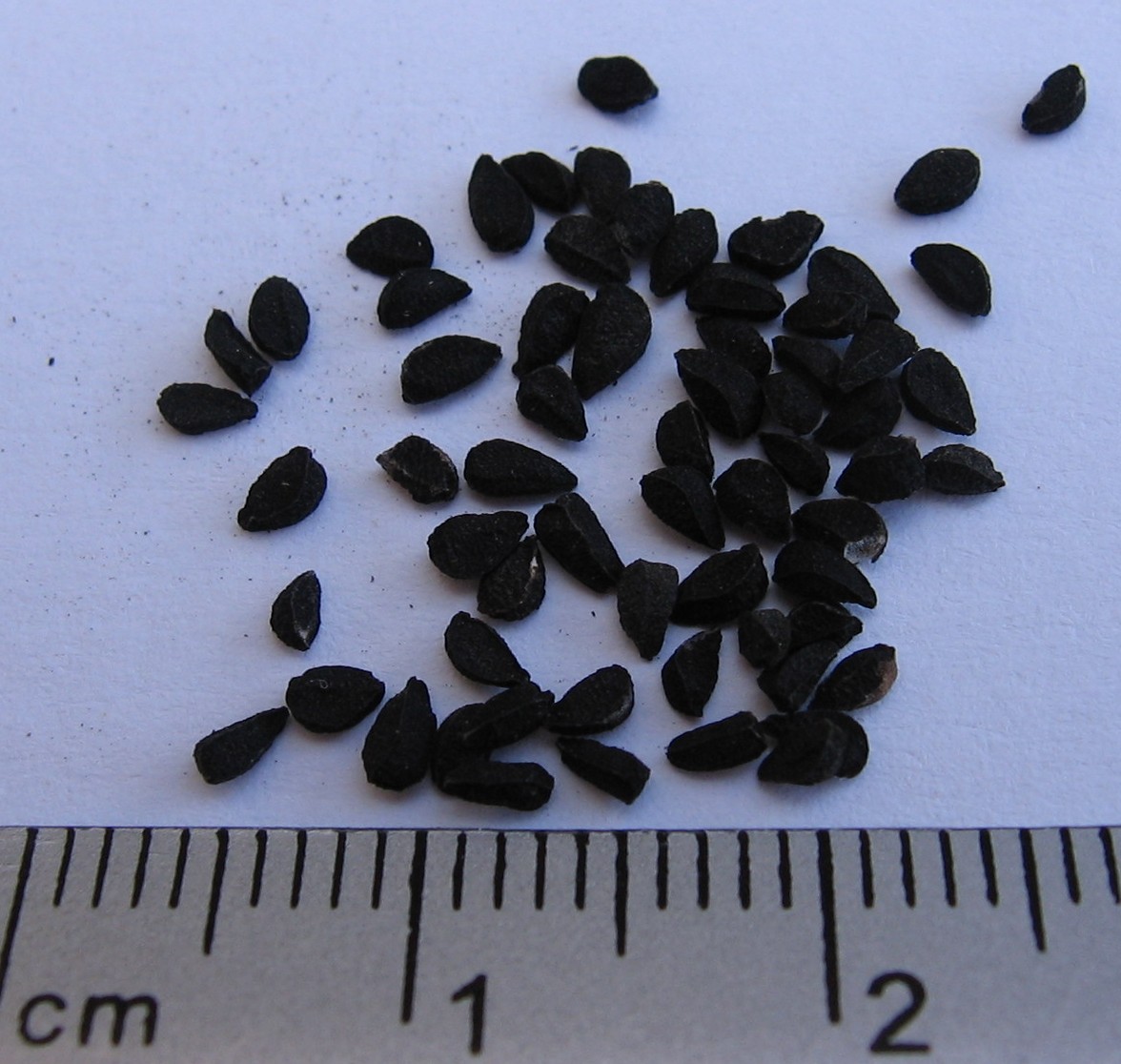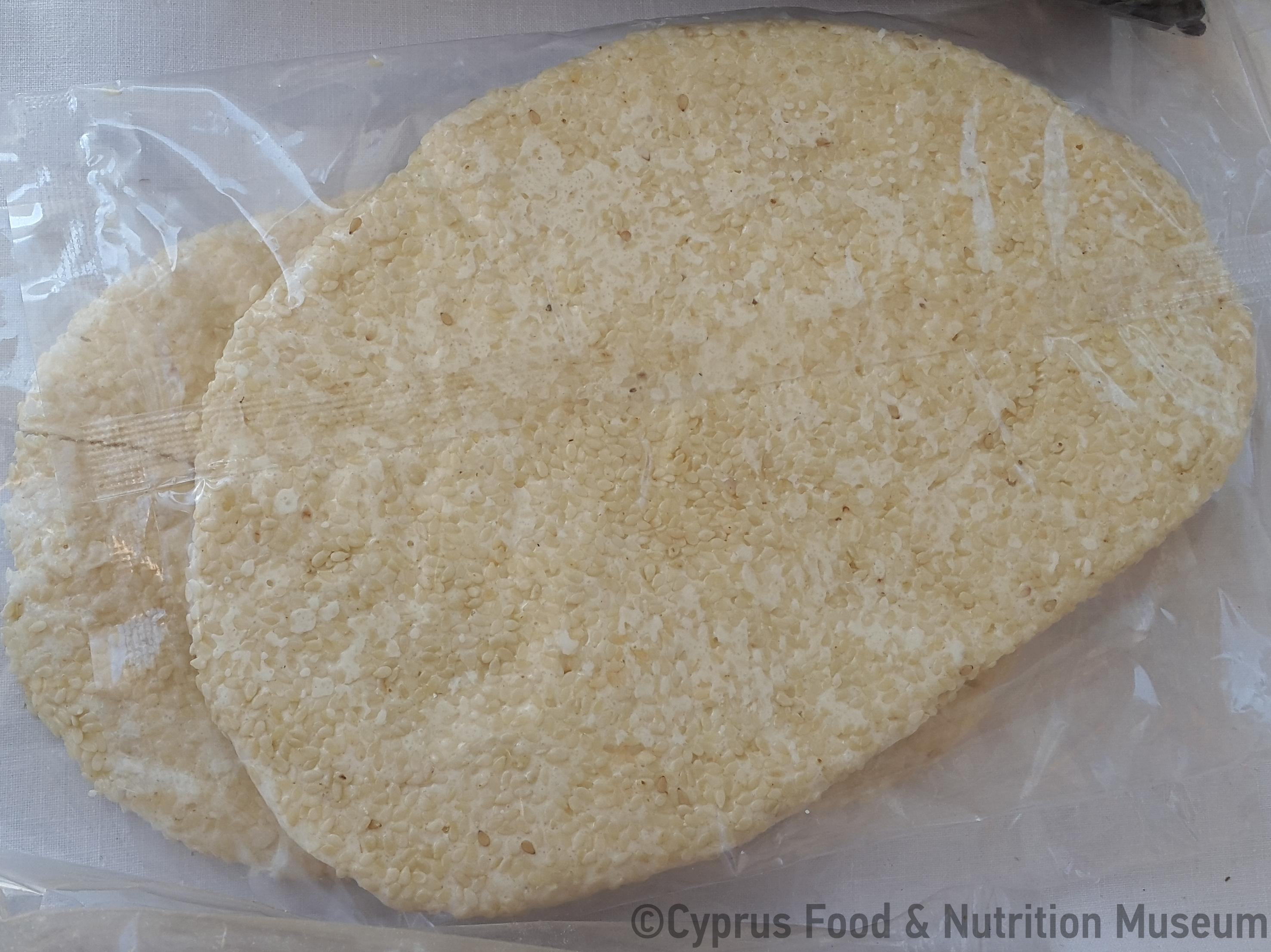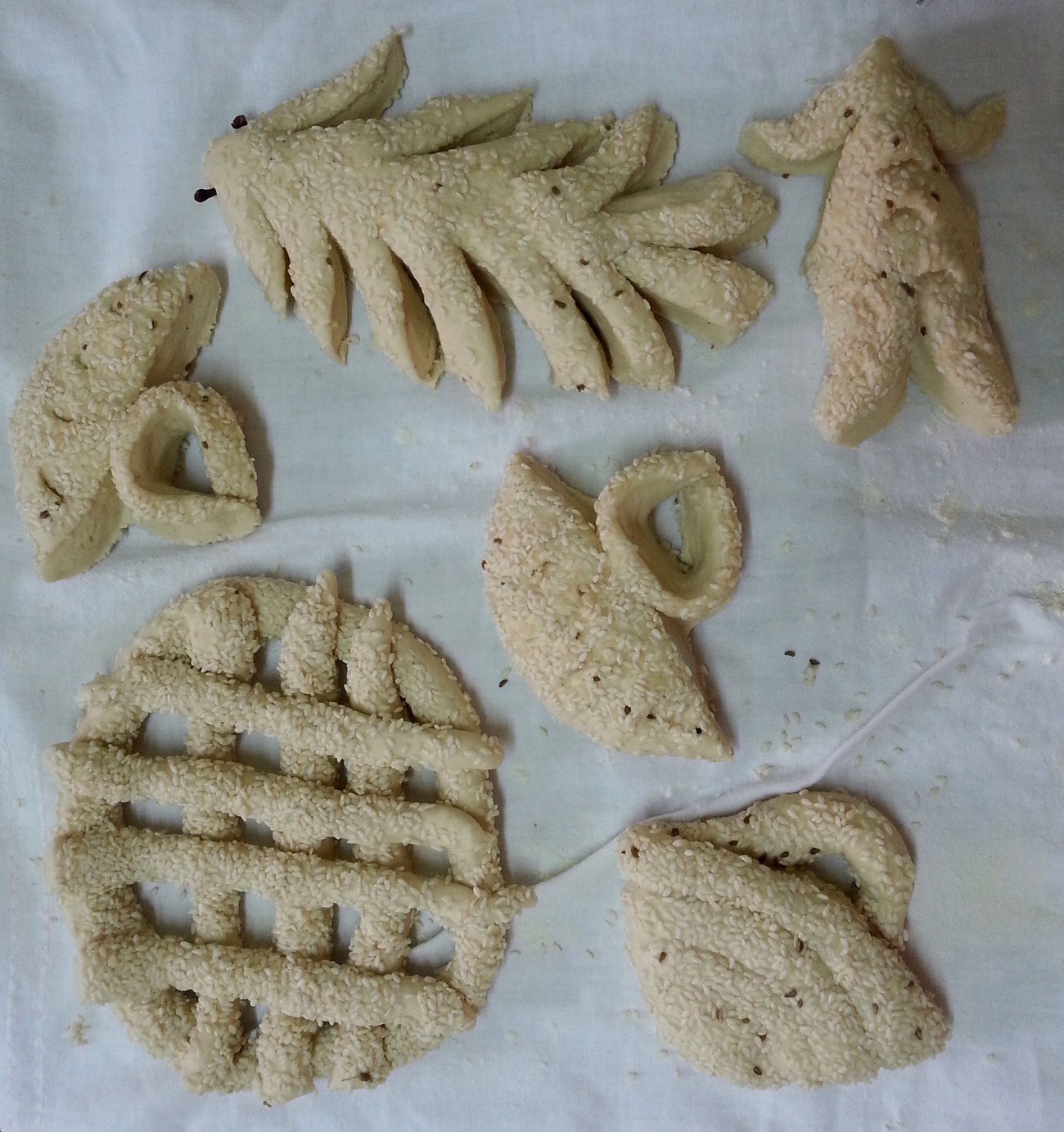Foods
New Year's bread or pitta (called also vassilopitta).
Foods
Artos was prepared on special occasions like Saints' Days, Christmas, Easter, weddings and memorial services as an offering to the church.
Foods
An Easter bread. After kneading kouloures (bread) and flaoúnes, women would use a piece of the same dough to form small cases in the shape of a salt cellar, in which they would place one or two eggs…
Traditional Recipes
A Christmas sweet, drizzled with syrup or sprinkled with sugar. In this recipe, the dates are pitted and stuffed with walnuts and then inserted whole in the dough.
Traditional Recipes
Flaoúna is the most characteristic Easter delicacy prepared and/ or consumed in all households in Cyprus. Its foukós (filling) is prepared 4-5 hours earlier or on the night before. Foukós is…
Traditional Recipes
Flaoúna, a traditional Cypriot pie, is the most characteristic Easter delicacy prepared and/or consumed in all households in Cyprus. Its foukós (filling), traditionally prepared using sourdough,…
Traditional Recipes
Flaoúna, a traditional Cypriot pie, is the most characteristic Easter delicacy prepared and/or consumed in all households in Cyprus. Its foukós (filling), is traditionally prepared using sourdough,…
Traditional Recipes
Flaoúna, a traditional Cypriot pie, is the most characteristic Easter delicacy prepared and/or consumed in all households in Cyprus. "The little girls used to take these flaounes with them to church…
Foods
Easter buns. Galena were made in certain places, mainly in Paphos, and were made with sugar and milk.
Foods
Christmas bread. Genopitta was round shaped, slightly larger than bread and decorated with small leaves, small crosses, etc.
Foods
The characteristic of glistarkes is their round shape and the multiple intersections of dough strips. The way in which the strips are interlaced is often reminiscent of weaving of textiles or baskets…
Traditional Recipes
The characteristic of glistarkes is their round shape and the multiple intersections of dough strips. The way in which the strips are interlaced is often reminiscent of weaving of textiles or baskets…
Traditional Recipes
Recipe for kneading koullouria (bread) and rusks, using animal or vegetable fat. The same dough was used to make avkotes, Easter bread or pastries of various shapes with a red egg in the middle.
Traditional Recipes
"... cut a piece of the dough, roll it over the sesame seeds which you have placed on a towel and give it an oblong shape. Create Easter dolls, bags (baskets), the sarakosti (Lent) figure and…
Foods
Very small buns made to be thrown to the bride and groom at the wedding ceremony during the 'dance of Isaiah'.
Foods
The bun was decorative on the wine gourd used to invite people to a wedding.
Foods
The residue after crushing sesame seeds and extracting the oil.
Foods
A spice used in many traditional bread preparations.
Traditional Recipes
The recipe comes from Marathasa. Sesamopites were one of the products sold by the people of Marathasa at festivals, along with porika, nuts, shoushoukko and pastellin.
Foods
Baked products with sesame: bread, koullouria, gennópites, lehouzoúthkia, koúmoulla and others.
Foods
Traditional Christmas baking includes “hristópsomo”, “gennópita” and “koulloúri” in various shapes and with different names
Traditional Recipes
After making the dough, the koulourka are given various shapes, such as oblong, rings, round but also avgotes, vatrahakia, zembilouthkia, stavrokoulloura etc for festive occasions.
Traditional Recipes
In the past, tsoureki (a type of braided brioche) was offered to guests when visiting women who recently gave birth or when inviting guests to weddings or christenings. Today, the preparation and…
Foods
A type of sesame Christmas bun, in the shape of a small frog.
Foods
Sesame pastries in the shape of a zembili (zembili=soft wicker basket).The zembilouthkia or syriouthkia (from the ancient spyris, zembili), are made symbolically, to bless the farmer's zebili, whilst…

